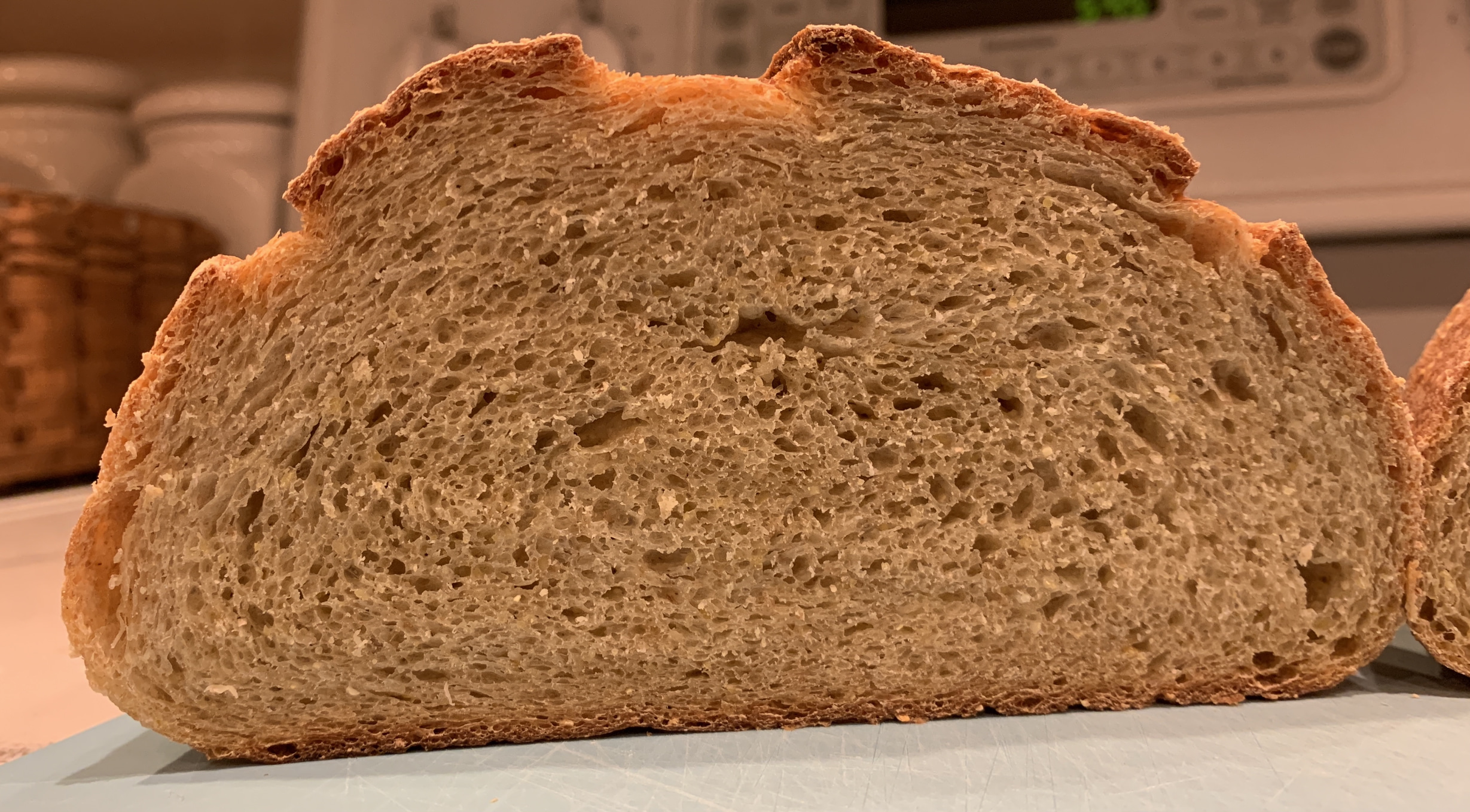This bread is a corn/rye mash bread. Details can be found in my blog entry. https://www.thefreshloaf.com/node/68177/if-it-works-bourbon-why-not-bread
Any thoughts on what caused the crumb compression along the upper crust?

This bread is a corn/rye mash bread. Details can be found in my blog entry. https://www.thefreshloaf.com/node/68177/if-it-works-bourbon-why-not-bread
Any thoughts on what caused the crumb compression along the upper crust?

Your hydration is only 56.5% including the flours in the mash.
308.7 grams water.
546.5 grams of various flours.
Dave, I should have removed the entries in the lower rows in the mash column. I copied them up to the main part of the spreadsheet so they were included in the totals. Sorry about that confusion... Formula totals are everything above the heavy black line.
Total flours = 475g Total water (including mash water and RYW) = 308.8g
The photo still looks under-hydrated. Just my amateur opinion.
Thanks! That’s not something I considered, and Benny mentioned the same thing in my blog post. Going to bump it a bit on the next bake.
Curious... What are you looking at that points to under hydrated?
It looks like mine when they are under-hydrated. :-)
Scroll down to the crumb photo on this one: https://www.thefreshloaf.com/node/67868/43rd-bake-04012001-75-ww-523-g-flour
Fair enough. :-)
Agree they do look similar. Guess the main difference I see is your crumb is uniform throughout the slice, but mine has a dense perimeter (can see bubbles that flattened out) and a little more open center.
I think because of the low hydration the extensibility is decreased while the elasticity is increased. I believe that is the cause of the compression around the perimeter, that is my guess.
A few things could be in play...
1. proofing in a banneton, especially in the fridge, wicks away moisture, starting at the periphery. So outer areas might be drier. If hydration is already borderline, this could push it over the line.
2. When cooled in fridge, the cold penetrates slowly. Outer areas cool off first and fermentation in the outer areas slows first, while the warmer core chugs along making gas. (The reverse happens if you continue proofing at room temp _after_ refrigeration: Outer areas warm up and re-start fermentation, while core stays cool.)
I sometimes take the banneton out of the fridge while oven is pre-heating, and thereby get bigger alveoli near surface.
3. In the oven, yeast dies off starting from the outside going in. So core will ferment a little more.
--
Net: Whole rye and whole corn flour need more water than Bread/AP. So your 65% was a tad insufficient.
Just estimating... Your bread flour could use 67%, your AP about 64%, your whole rye and whole corn at least 85%.
.35 x .67 = .2345. For the Bread flour.
.35 x . 64 = .224. For the AP flour.
.30 x .85 = .255. For the whole rye and whole corn.
.2345 + .224 + .255 = .7135 or 71% minimum hydration, or first approximation.
Dave, Thank you for the detailed response and the target for the next bake!
I just picked up on this:
"Mixed up a 60:40 (corn:rye) mash and cooked it per Reinhart's method for 2 hours."
Did you actually simmer it for two hours? Or did you pour boiling water over it and immediately cover it to trap in all moisture?
If it actively simmered, covered or not, that could be a source of water loss, unless you weighed it after cooking and added/adjusted water back up to the stated amount.
Good call, but I did account for that. Weighed the mash at the end of the cook and adjusted.
It’s cooked in the oven at 150 deg F. I covered the bowl tightly with aluminum foil. Not warm enough to get an active simmer or too much evaporation.